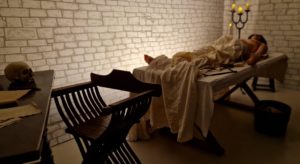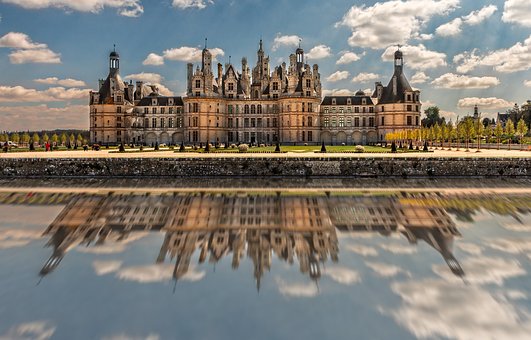A show at the Clos Lucé in Amboise, the manor where the master lived for three years until his death in 1519, details his tireless search for the “mechanics” of life through study, experimentation and especially dissection. Leonardo unlocked the secrets of digestion, respiration, circulation and reproduction, worked out the interplay of muscles and tendons, and even gained insight into sensory functions.
Artists without anatomical knowledge “wanting to pass off as great draughtsmen make their nudes lineal and graceless (which) appear more like sacks of walnuts than human forms,” Leonardo wrote.
In addition to stunning drawings and notes by the self-taught polymath, the exhibition, “Leonardo da Vinci and Anatomy, the Mechanics of Life”, includes a video room showing an anatomical analysis of The Last Supper and a “dissection room” — curtained off so that the squeamish can abstain — that replicates Leonardo’s candle-lit work set-up at a hospital.
The show was co-curated by prominent Leonardo expert Pascal Brioist of the University of Tours and Dominique Le Nen, a surgeon specializing in the hand and a historian of science and technology.
 Leonardo’s insatiable curiosity led him to dissect not only animals, but humans as well, including at least one woman who died with an unborn baby in her womb. He obtained his specimens–usually dead criminals–from medical schools, according to French biographer Serge Bramly.
Leonardo’s insatiable curiosity led him to dissect not only animals, but humans as well, including at least one woman who died with an unborn baby in her womb. He obtained his specimens–usually dead criminals–from medical schools, according to French biographer Serge Bramly.
According to popular belief, Leonardo performed the dissections clandestinely, digging up cadavers in graveyards under cover of darkness. Not at all! He did the work with the blessing of hospital authorities, who provided him with appropriate facilities, Brioist said.
Leonardo was “among the best artists to have reproduced organs such as the hand, in spite of their being so difficult to recreate,” wrote Le Nen.
The show runs until September 17.

